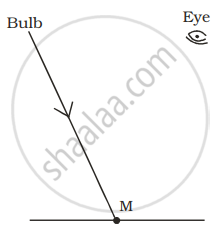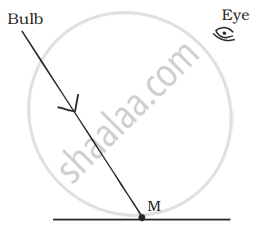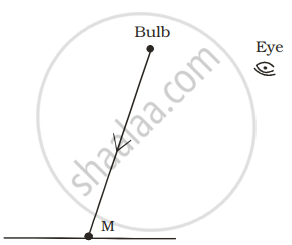Advertisements
Advertisements
Question
Solution
human eye :

APPEARS IN
RELATED QUESTIONS
List the parts of the human eye that control the amount of light entering into it. Explain how they perform this function.
The human eye can focus objects at different distances by adjusting the focal length of the eye lens. This is due to ______.
What job does the pupil of the eye do?
State whether the following statement is true or false:
The image formed on our retina is upside-down
Define the term "power of accommodation" of human eye.
How does the convex eye-lens differ from the ordinary convex lens made of glass?
If you walk from a dark room into sunlight and back again into dark room, how would your pupils alter in size? What makes this happen?
What is presbyopia? Write two causes of this defect. Name the type of lens which can be used to correct presbyopia.
The animal which does not have eyes that look sideways is:
(a) Horse
(b) Chicken
(c) Lion
(d) Fish
Note the relationship between the first two words and suggest the suitable word/words for the fourth place.
Cones : Iodopsim :: Rods : ______.
Given below is certain structure. Write against them its functional acivity.
retina and ……………………….
Correct and rewrite the statements by changing the biological term that is underlined for the statement:
The part of the eye which can be donated from a clinically dead person is the Retina.
Differentiate between:
Vitreous humour and Aqueous humour.
Differentiate between:
Retina and Choroid.
Draw a scientifically correct labelled diagram of a human eye and answer the questions based on it:
- Name the type of lens in the human eye.
- Name the screen at which the maximum amount of incident light is refracted?
- State the nature of the image formed of the object on the screen inside the eye.
Write the name.
The part of human eye that transmits electrical signals to the brain.
Write the name.
The fleshy screen behind cornea.
A tiny mirror M is fixed on a piece of cardboard placed on a table. The cardboard is illuminated by light from a bulb. The position of eye with respect to position of bulb is shown in the figure as A, B, C and D. In which position mirror will be visible?
 |
 |
 |
 |
| (A) | (B) | (C) | (D) |
What kind of lens is there in our eyes? Where does it form the image of an object?
Vitreous humour is present between ______.
